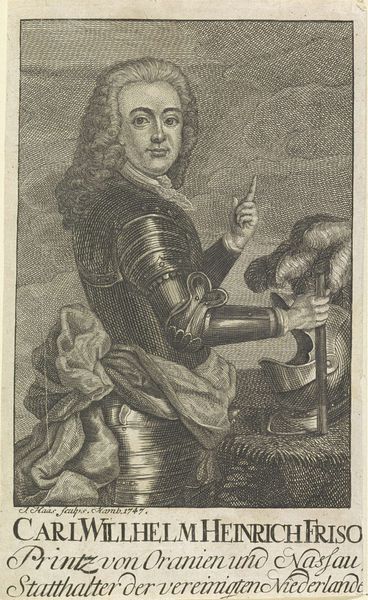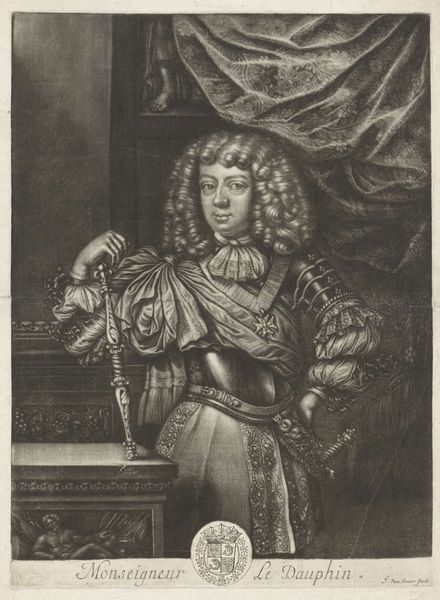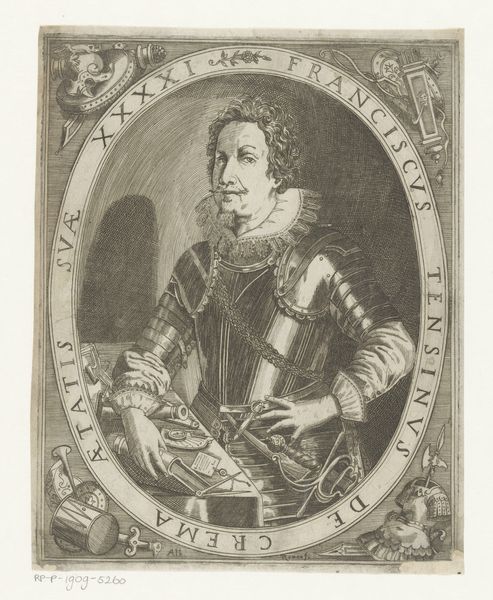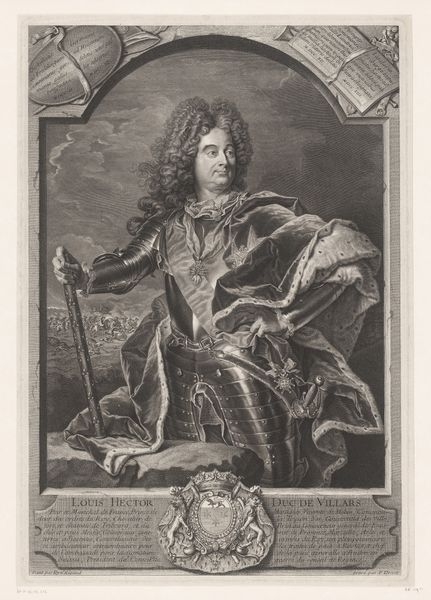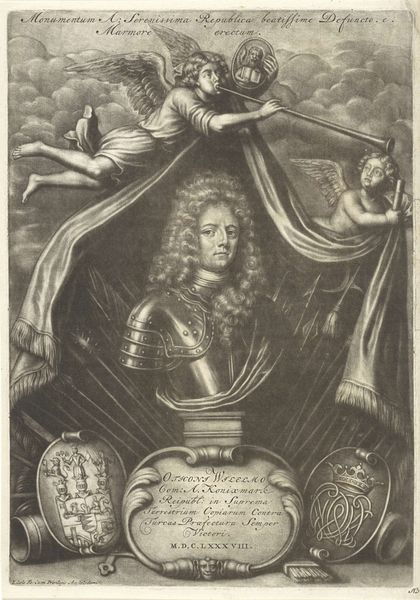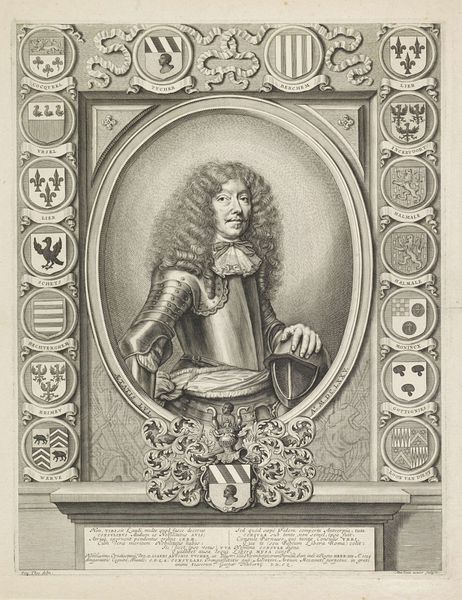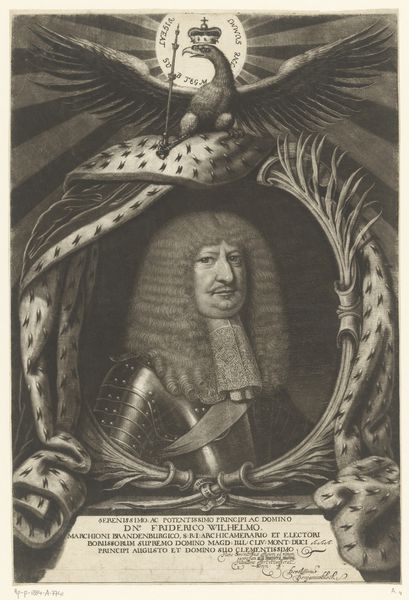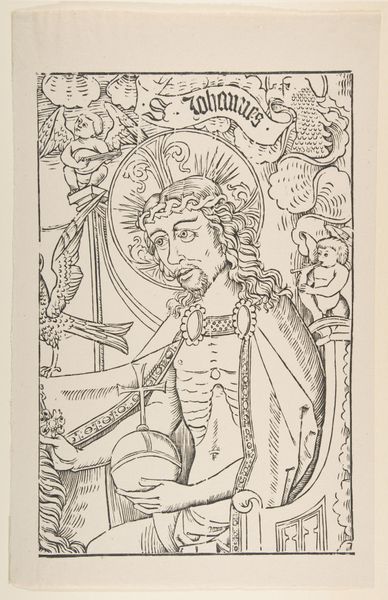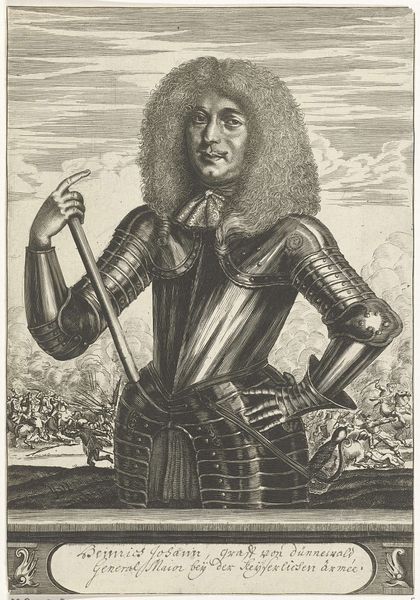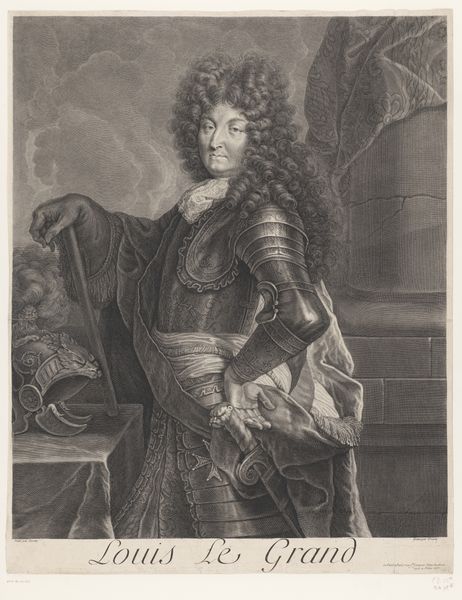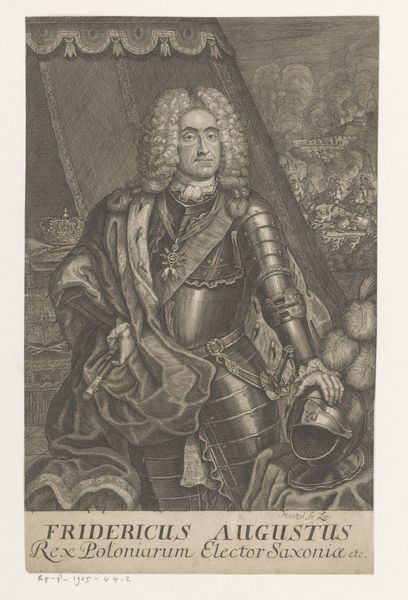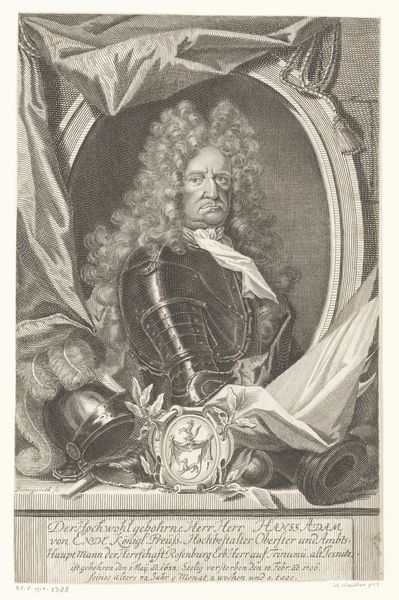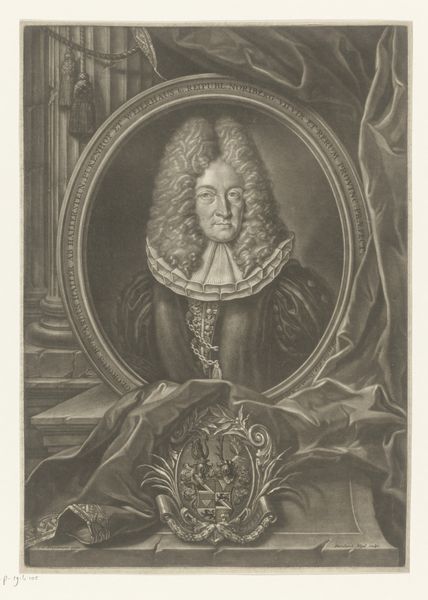
print, engraving
#
portrait
#
baroque
# print
#
figuration
#
line
#
history-painting
#
engraving
Dimensions: height 472 mm, width 372 mm
Copyright: Rijks Museum: Open Domain
Editor: This is "Portret van Willem Bastiaansz. Schepers," a print dating somewhere between 1655 and 1704, currently housed at the Rijksmuseum, and created by Romeyn de Hooghe. The subject is encased in a fantastic display of armoury! What details stand out to you as an expert? Curator: My eye is drawn to the intricate interplay of textures and lines. Consider the contrast between the smooth, polished surfaces of the armor and the roughly etched background, suggestive of both landscape and implied architecture. How does that tension inform your reading? Editor: I hadn't noticed that at first. The landscape and implied architecture contrast create depth that keeps the eyes interested and active. Can you expand more on the composition? Curator: Absolutely. The portrait is carefully structured around a central figure, encased within a shell, if you will, the curve of which draws your eye toward the horizon behind the central figure. Note, too, how the density of lines increases near the subject's face, directing the viewer's attention. Do you notice any patterns or repetitions? Editor: Now that you mention it, the curves around his neck mirror the armour curvature. It’s a little repetitive, though. Do you see anything different about the piece? Curator: While I appreciate your concern regarding repetition, I find the echoing lines create visual harmony and enhance the unity of the composition. One might also consider how the line and structural quality evokes similar styles, but challenges our traditional notions of what a portrait could or should be. What do you make of the placement of text within the art, as part of its intrinsic structure? Editor: I think without it, this would just be another portrait of armour. Considering the composition, lighting, and depth, the visual texture has an interesting and pleasing story to tell! Curator: Indeed, considering these artistic elements of line, composition, and structure allows the art viewer to go beyond history.
Comments
No comments
Be the first to comment and join the conversation on the ultimate creative platform.
